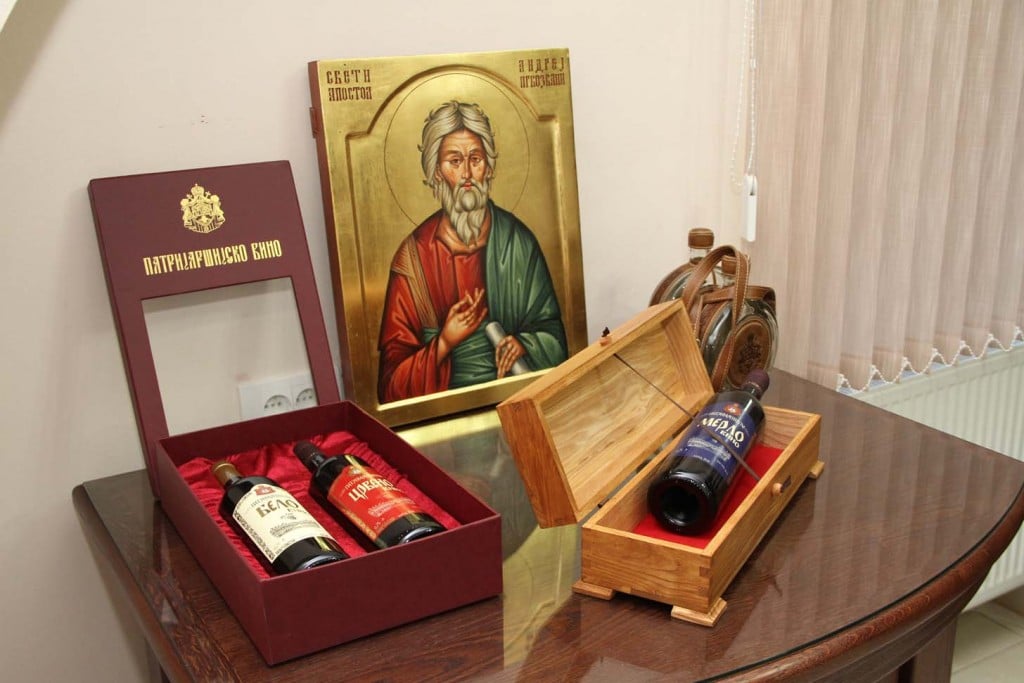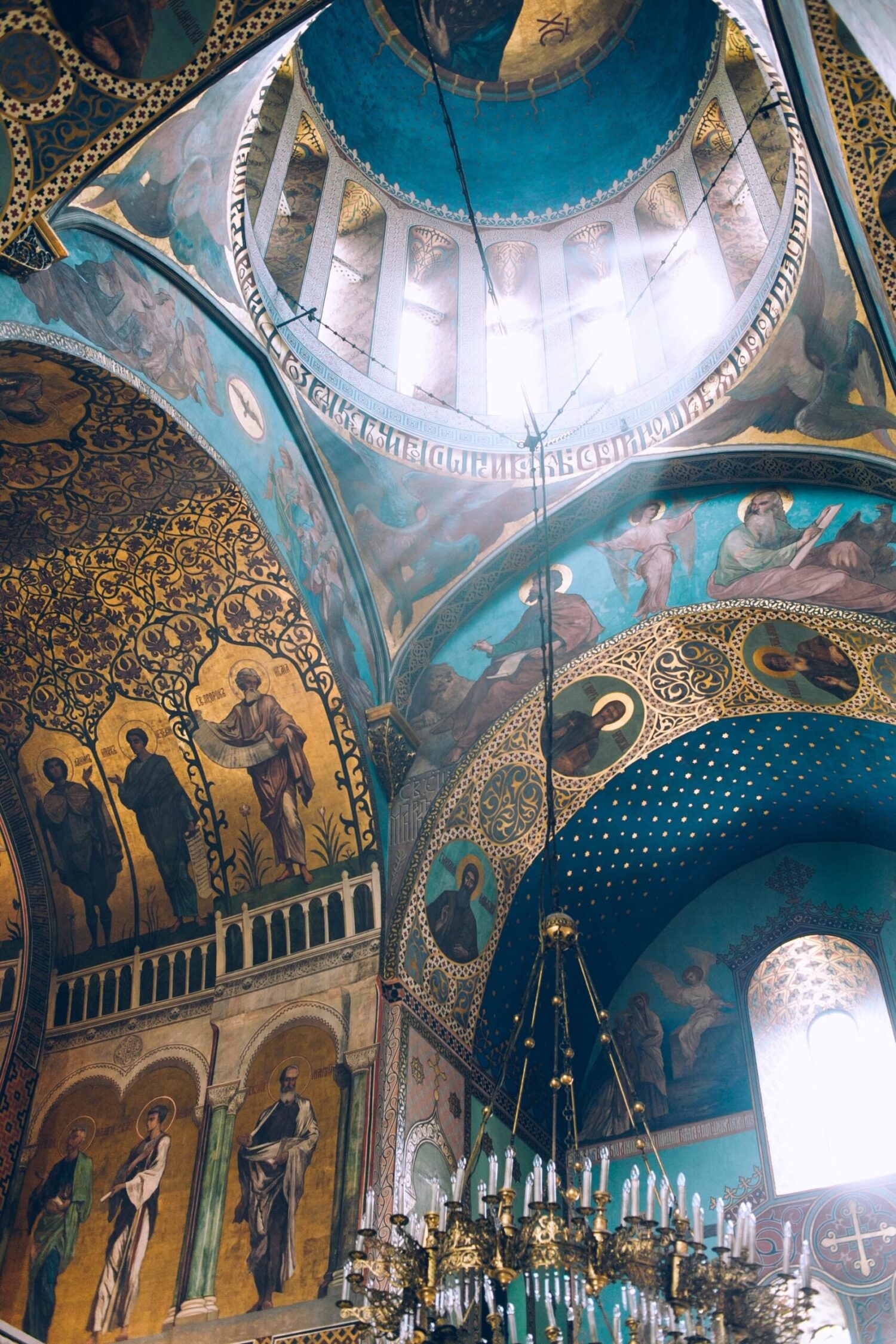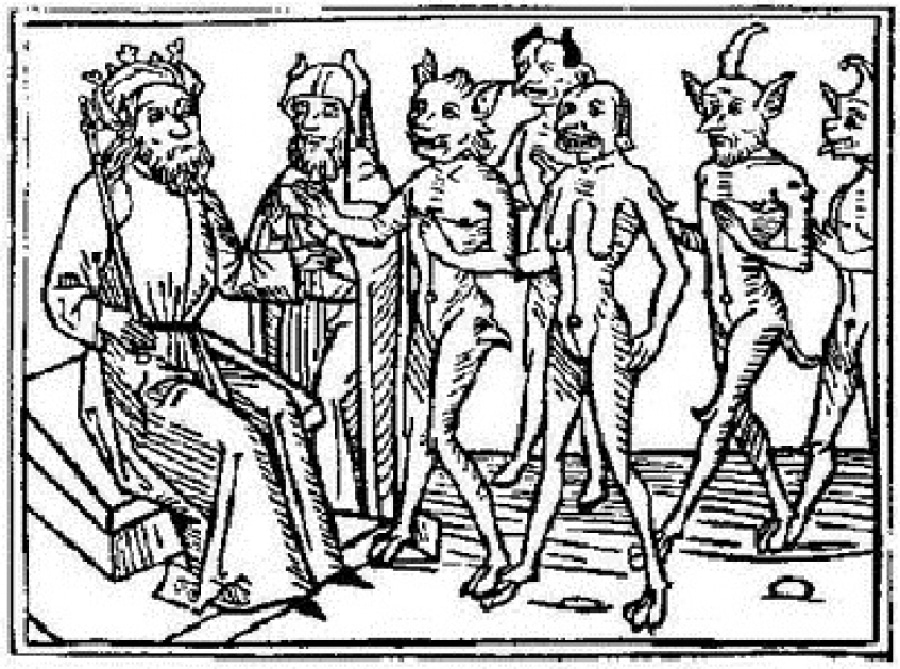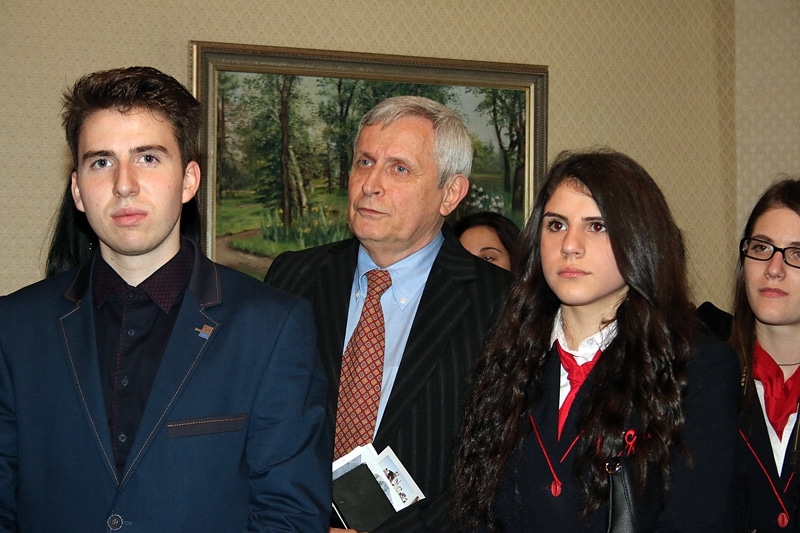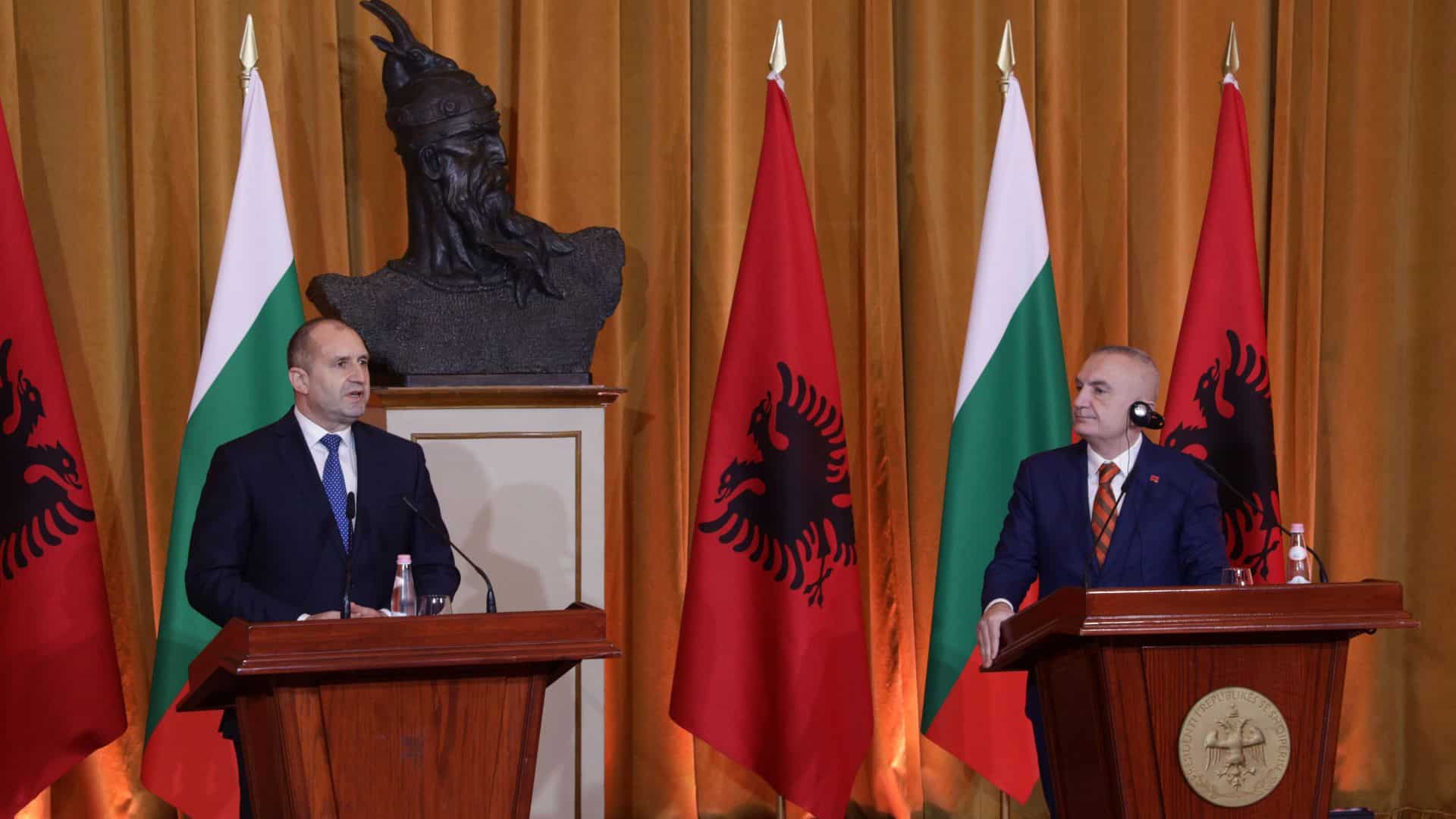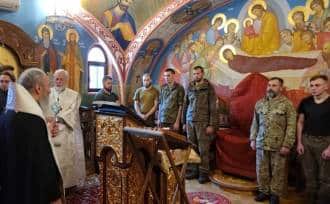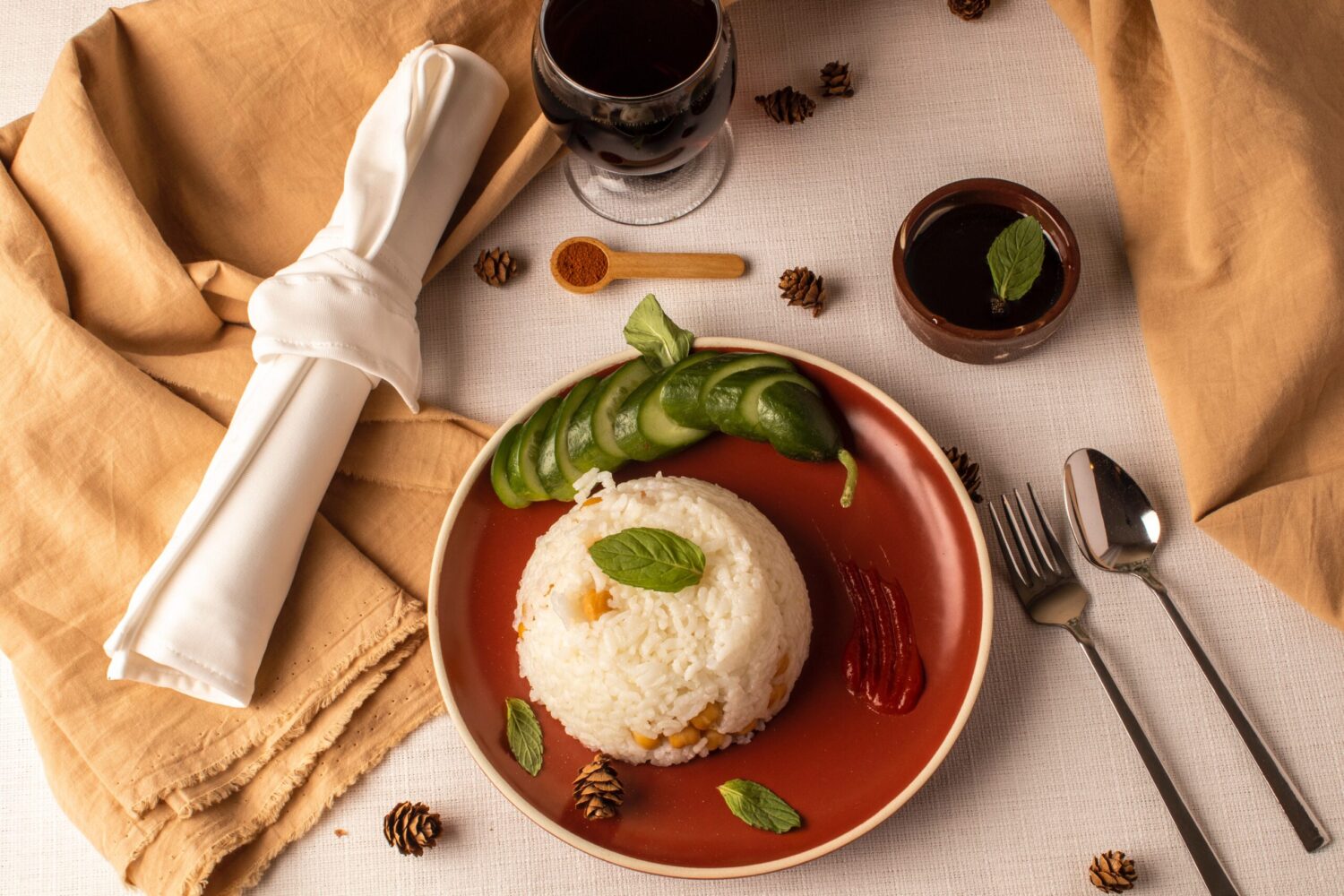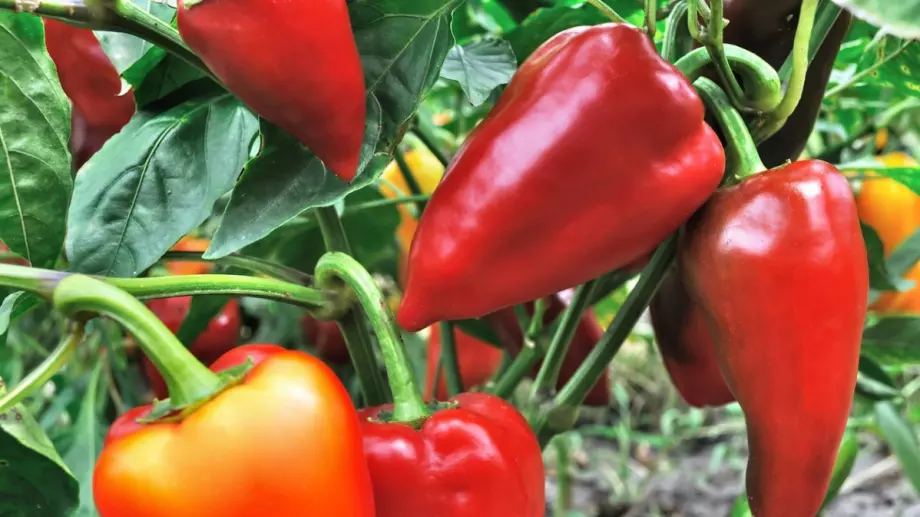Serbian Orthodox Church produces its own brand of wines and brandies – Patriarcheski. Her cellars in Sremski Karlovtsi continue a centuries-old tradition. The cellars are located in the Old Palace, and the vineyards are located in the vicinity of Fruškogorsko village. The patriarchal cellars keep, as ever, excellent wines: patriarchal red, patriarchal white, as well as dessert wines, of which, in any case, the most famous is bermet. Of course, wine is also produced for liturgical purposes, as a Eucharistic gift, because of all the works of human hands, the production of bread and wine requires the most labor.
The winemaking tradition in the Serbian Orthodox Church dates back to its foundation and its first spiritual leader, St. Sava Nemanic. Around 1230, Archbishop Sava concluded a contract with the “Protat” of Svetogorje regarding the boundaries of the Hillendar vineyards. St. Sava personally places and supervises the boundary stones. “I also personally covenant that when this place shall be made into vineyards, to hold and govern these vineyards undeniably, undisturbed, and irrevocable during my sojourn among the living, and after the end of my life one half of the vineyards I bequeath to my cell , which is dedicated to our venerable Father Sava and is located near Careia, and which I have built from the ground up, and the other half – to the collegiate church in Careia…” – this is the will and testament of St. Sava in this particular case .
The town of Sremski Karlovtsi, located northeast of the main Fruska Gora massif (mountain), near the Danube River, is a place with important historical traditions and a rich cultural and spiritual heritage. Due to its geographical position – on the road from Central to Eastern Europe, from Vienna to Istanbul – it was an important place throughout all centuries of the new Serbian history. Sremski Karlovci is 57 km from Belgrade and 12 km from Novi Sad. It is the administrative seat of the Karlovy Vary, the ecclesiastical unit that united the Serbs in the Austro-Hungarian Empire. In the political and cultural life of the Serbian people north of the rivers Sava and Danube, Sremski Karlovci occupies the most prominent place. In this municipality, thanks to the natural conditions, viticulture is also developed, improved even more under the sacred wing of the Serbian Orthodox Church.
Fruška mountain is extremely suitable for viticulture. Wine in Sremski Karlovci also had a special role, especially in the liturgical life of Sremski Karlovci as a church center.
The librarian of the Hungarian king Matthias Corvinus (1458-1490) Galeotti, a man of taste and scholar in his environment in the 16th century, wrote after tasting the Srem wine that “there is none like it in the whole earth.”
The geographical advantages of Sremski Karlovci in terms of growing vineyards are highlighted by the travel writer Anton Vrancic, who traveled by the town in 1553 and 1557 and says that Sremski Karlovci “despite the reduced number of houses and population, of all the surrounding towns is relatively the least damaged, and the most populated and there are abundant fields and vineyards, and Srem wine has been known since time immemorial, while in other places viticulture is neglected”. The travel writer Hans Löwenklau, who accompanied the prince of Liechtenstein on his way to Constantinople in 1584, pointed out that Karlovci was mostly inhabited by Christians and that it was a place “where good wine is born”. In the same year, 1584, Melchior Bezolt also passed through Karlovtsi, who remembers his stay there because on the way from Vienna his group “did not drink better wine”, i.e. that Karlovtsi is a place “where good wine is born , often with a nice color too”. Maximilian Prandstetter mentions that the crabs, i.e. the Serbs, gave him three large barrels of wine and many animal products on the way to Constantinople in 1608, because in Karlovci “there are many vineyards and good wine”. At the same time, the Polish poet Janko Kohanowski used “Srem wine” in his poems as a metaphor for abundance and luxury. All this shows that both Sremsko and the wine from Sremski Karlovtsi had a good reputation in Central Europe at the end of the 16th and the beginning of the 17th century.
Patriarch Arseniy IV Jovanovich Shakabenta (1737-1748) built a chapel dedicated to St. Tryphon next to the southern wing of the new archbishop-metropolitan residence. The construction lasted in the period 1740-1742, and the commemorative plaque testifying to the construction of the church is today located in the vestibule of the Old Palace, since the chapel burned down in a fire in 1788. The very fact that the church was dedicated to a saint, patron of winegrowers, speaks volumes about how much the production and sale of wine was present in the economy of the population of Sremski Karlovci and how much the Serbian Orthodox Church cared for them.
Winemaking and viticulture in the Karlovy Vary have enjoyed special attention. European technological development was followed, assimilated and written about by official church representatives and figures.
The encyclopedic spirit of Zacharia Stefanovich Orfelin (1726-1785) gave birth in 1783 to the handbook “Experienced Selection”, which went through four additional editions in 1808, 1817, 1874 and 1885. Enumerating the famous European wines, Zacharia Orfelin concluded: “In Srem , and especially in Karlovtsi and in some monasteries there are also good and stable wines that are dark red and relatively strong. The wine they make during the harvest from fresh red must and call “schiller” is an exceptional drink that is also healthy. It acquires a reddish tint, and when aged for three or four years it acquires an incredibly fine taste, and after eating it you don’t need more than a glass or two, just like medicine and bliss, because it is very strong.”
Until the middle of the 19th century, more red than white wine was drunk in Karlovtsi. This is evidenced by the inventory of the will of Metropolitan Jovan (Djordjevic; 1769-1773). According to this document, white wine is only one fifth of the total amount.
In the 18th century, Karlovy Vary wine was exported to Austria, Switzerland and Poland. A particularly large consumer of it is the Vienna Palace headed by its ruler. The royal-royal envoy to the Serbian Church-People’s Assemblies, Friedrich Wilhelm von Taube, describing the life of the Serbs in the Austro-Hungarian Empire, Sremski Karlovci, the Orthodox churches there and the metropolitan building, also points out the making of the then-famous bermet: “Behind the metropolis a house rises , in which the Illyrian People’s Secretary lives, and directly opposite this old residence – a new farm building, decorated with stone pillars and soaring arches, which barely covers the square and is 24 fathoms (45.5 meters) long, but has only a ground floor. In it and the adjacent three rear buildings are located both the apartments of the metropolitan officials and servants, as well as a bakery, a barn, a shed for cars (phaetons), stables for horses, etc. Here also a certain bermet is made in large quantities ( Tropf-Wermuthwein) and vats (measurement unit about 50 l.) of it are sent far away. The best bunches are put uncrushed into cloth sacks, from which the juice begins to drip and flow of itself, and then it is boiled once with aromatic herbs and strong roots, and thus a wonderful bitter wine is obtained.’
Among the dessert wines mentioned during this period, we note Karlovy Vary Bermet, Bermet Kaplaš and Samotok. Bermet is also known as Serbian wine (Raiyischer Wermut), Bermet Kaplaš (Tropf-Wermut) and Samotok (Ausbruch). These Serbian wines, among other things, affect the mood and reduce tension. Karlo Buyanovich from Vienna sought out Karlovci singletok in order to obtain the favor of a Viennese lady by giving it as a gift, and it seems that it was the favorite drink in the palace under Metropolitan Vikentii (Jovanovich Vidak; 1774-1780). Metropolitan Pavel (Nenadovic; 1749-1768) is known to have often managed to bring about a favorable outcome to Serbian national-ecclesiastical issues in the Vienna Palace by giving gifts of Karlovy Vine and brandy. Letters of thanks by the First Count von Rittberg to the metropolitan for “two akkas (about 100 l) of bermet and a few akkas of other wines” have been preserved.
At the end of the 18th century, both the economic life and the viticulture of Sremski Karlovci came to a standstill. The reasons for this were different, firstly, a fire occurred in 1799, which consumed the village of Gorni Kraj, where the richest residents lived, and the same year, the cold destroyed the vineyards of Karlovy Vary. In 1801 bad weather attacked the settlement, a cyclone tore down the roofs and heavy rain flooded the cellars. The damage to the vines is enormous. The Austrian and Napoleonic wars also hindered the export of wine, and during that time only Karadjordjeva Serbia imported wine and brandy from Srem.
Procopius (Bolich; † 1818), archimandrite of the Rakovitsa monastery in Fruška gora (Frushka mountain), left behind Orphelin an even more complete viticultural manual. And he made a compilation, translated from the Latin, of the then living French oenologists Abbé Rozier, Count (chemist) Chaptal, and the academic oenologist Paramantier.
The Archimandrite of Rakovac points out that the climate in Srem and Slavonia is very favorable, because there “the sky leans more” towards the middle between the coldest and the warmest. “And indeed in Srem such a wine is born, which in olden times was very glorious and famous for its prosperity and stability, for its long duration, its extraordinary taste, for its peculiar smell and its very beautiful appearance…”.
Phylloxera, the disease of European vineyards in the second half of the 19th century, began to attack the vineyards of Fruškogorsk in 1881. When its first deadly waves passed, a renewal of viticulture began, based on the so-called “American foundations”, with the transfer of new varieties of grapes that were brought to the Old Continent from their transoceanic homelands. In Sremski Karlovtsi, there are changes in the grape varieties: red wines are decreasing at the expense of white wines. It also leads to a reduction in the amount of wine produced. Efforts are also being made to renew viticulture in Srem and beyond. Theoretical knowledge was collected by Jovan Zivkovic, a professor at the Karlovac Seminary, who at the beginning of the 20th century made systematic manuals for Viticulture and Viticulture.
Drinks for the enthronement ceremony of Patriarch Dimitri, the first head of the united Serbian Orthodox Church, were also delivered from the Karlovac cellars. The ceremony took place in Pécs in 1924, and the types and quantity of wine are known in detail: 1,000 bottles of dessert wine (Karlovački bermet), 1,000 liters of white, 500 liters of red wine, 500 bottles of champagne and 100 liters of brandy.
Today, the patriarchal cellars in Sremski Karlovtsi are continuations of the tradition and inheritors of the knowledge and skill of making wine, which has been cared for for centuries.
The Serbian Patriarchate owns modernly equipped cellars, in which branded wines and brandies in various cuts are now produced and sold.
Source: According to information from the official page of the Serbian Orthodox Church



